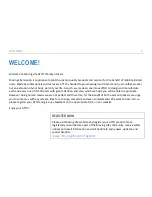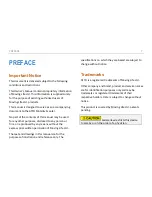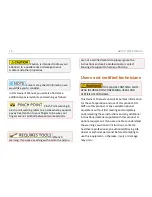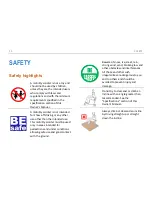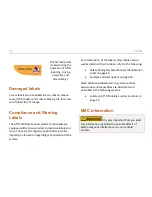
12
BACKGROUND
BACKGROUND
Moving Life's ATTO is an advanced-technology Class A
mobility scooter, designed for use indoors and on
sidewalks. When driving on a pavement you should
follow the rules for pedestrians. You should give
pedestrians priority and show consideration for other
pavement users, particularly those with a hearing or
visual impairment who may not be aware that you are
there.
In most countries, mobility scooters may only be used
by a disabled person, or by a nondisabled person who
is demonstrating a vehicle before sale, training a
disabled user or taking the vehicle to or from a place
for maintenance or repair. A disabled person in this
context is someone with an injury, physical disability,
or medical condition which means that they are
unable to walk or have difficulty in walking.
If you are using a mobility vehicle for the first time, or
if it has been a while since you have driven one, you
are strongly advised to get some training to ensure
that you can steer and control the vehicle properly,
especially on uneven surfaces. Your assessment
should include checking your eyesight, reaction time,
balance and posture, ability to sit for long periods of
time, concentration and ability to get on and off the
mobility scooter. You may also want to consider
having a regular review of your driving skills.
Although in most countries there are no legal eyesight
requirements, good vision is important for driving a
mobility vehicle safely. You should be able to judge
distances, recognize obstacles and hazards, and be
able to see pedestrians and other road users. Poor
eyesight could be a contributory factor in an accident
and could make you liable for a compensation claim.
Vision can change with age and you are
recommended to have regular sight tests.
If you are eligible to be registered as severely sight
impaired (blind), you should not drive a mobility
scooter as this would put yourself and others at risk. If
Summary of Contents for MS01068
Page 1: ...OWNER S MANUAL movinglife com ...
Page 2: ...WELCOME 1 WELCOME TO ATTO ...
Page 3: ...2 WELCOME Intentionally left blank ...
Page 5: ...4 WELCOME Intentionally left blank ...
Page 7: ...6 TABLE OF CONTENT Intentionally left blank ...
Page 29: ...28 ATTONOMY ATTONOMY Figure 1 ATTO in close mode ...
Page 30: ...ATTONOMY 29 Figure 2 ATTO in driving mode ...
Page 31: ...30 ATTONOMY Figure 3 More ATTO parts ...
Page 82: ...NOTES 81 NOTES ...
Page 83: ......




